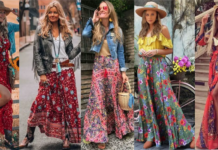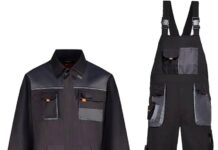Sustainable fashion is very important to me. Transforming the fast fashion industry into a more sustainable model requires significant changes at every level, from production to consumption. While fast fashion is known for its rapid production and low prices, it can adopt several practices to reduce its environmental and social impacts.
Give me time and I’ll give you a revolution. The first step towards making fast fashion sustainable is to incorporate eco-friendly materials. Using organic cotton, recycled polyester, and other sustainable fabrics can greatly reduce the environmental footprint of clothing production.
“I want the fast fashion industry to realize that sustainability and speed can coexist. It’s about innovating processes to protect our planet.”
**Sustainable fashion** practices should also include ethical labor conditions. Ensuring that workers receive fair wages and operate in safe environments is crucial. This not only supports human rights but also fosters a more sustainable and ethical supply chain.

I never compromise on my values. My commitment to sustainability drives every decision I make. Fast fashion brands can adopt similar values by investing in technologies that reduce waste and increase efficiency. For example, using digital printing techniques can minimize fabric waste and lower water usage.
To make fast fashion sustainable, brands should focus on creating high-quality, durable pieces that can withstand multiple wears and washes. This approach not only reduces the frequency of purchases but also promotes a culture of longevity over disposability.
Sustainable fashion can be achieved through circular economy principles. Fast fashion brands should design clothes that can be easily repaired, reused, and recycled. Implementing clothing take-back programs and encouraging upcycling can help extend the life of garments and reduce landfill waste.
Confidence. If you have it, you can make **sustainable choices** look effortlessly stylish.
**Sustainable fashion** emphasizes transparency throughout the supply chain. Fast fashion brands should disclose their sourcing, production processes, and labor practices. This transparency builds consumer trust and encourages more informed purchasing decisions.

Sustainable fashion requires a commitment to reducing environmental impact. Fast fashion brands can adopt practices such as reducing water and energy consumption, minimizing chemical use, and utilizing renewable energy sources. These steps collectively contribute to a more sustainable industry.
“**Sustainability** in fast fashion means rethinking how clothes are made, sold, and used. It’s about creating value without compromising our environment.”
Elegance in **sustainable fashion** is about more than just style; it’s about the ethical choices behind each garment.
Sustainable fashion challenges the fast fashion industry to innovate and adopt more responsible practices. By fostering a culture of sustainability, the industry can meet the demands of consumers while protecting the planet.
Mastering sustainable fashion in the fast fashion sector involves continuous learning and adaptation. For me, fashion is about finding new ways to be creative while minimizing environmental impact.
I’ve always aimed to push the boundaries of what sustainable fashion can achieve. This journey involves creating contemporary, eco-friendly garments that reveal a person’s true self while protecting the environment.




























